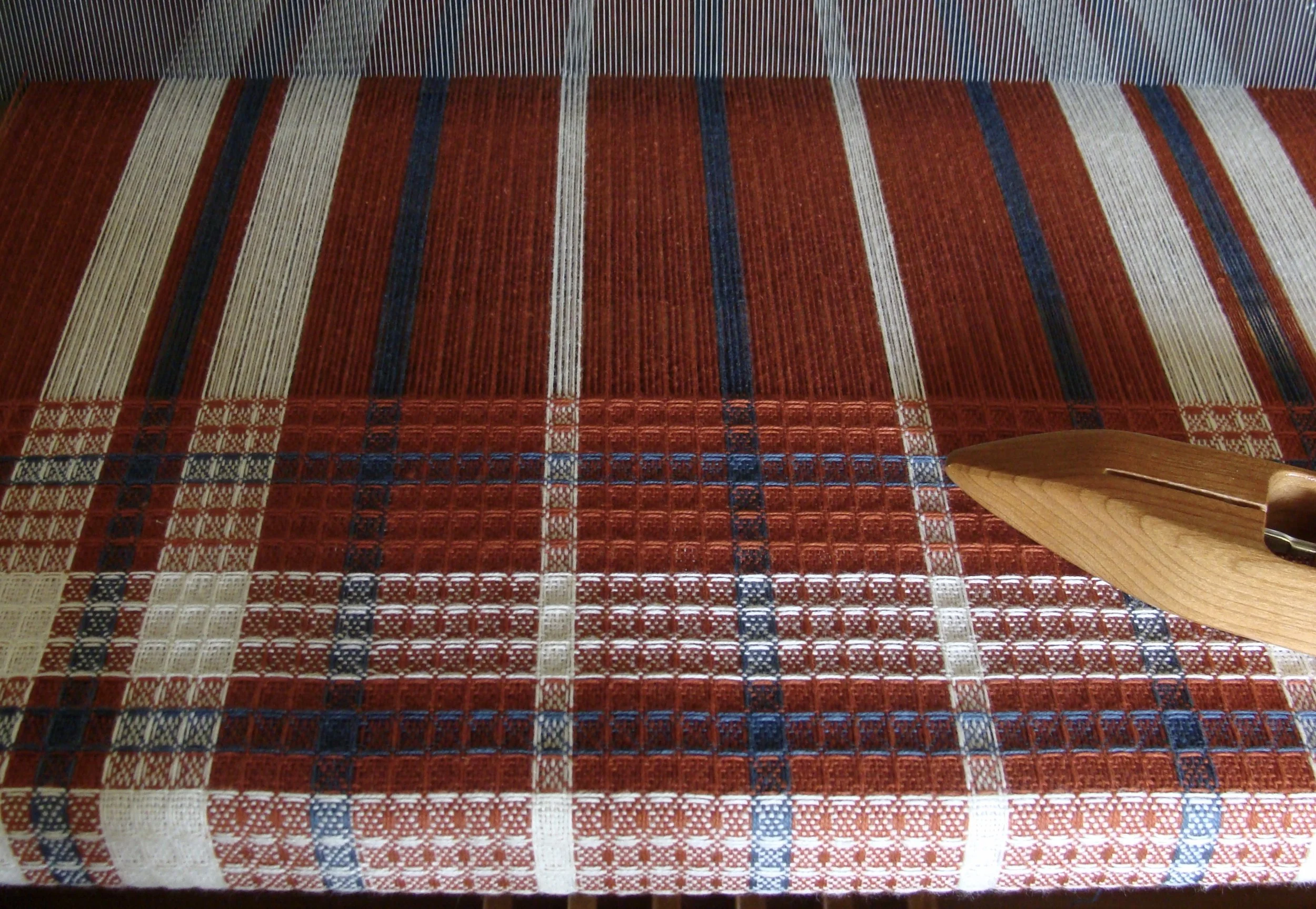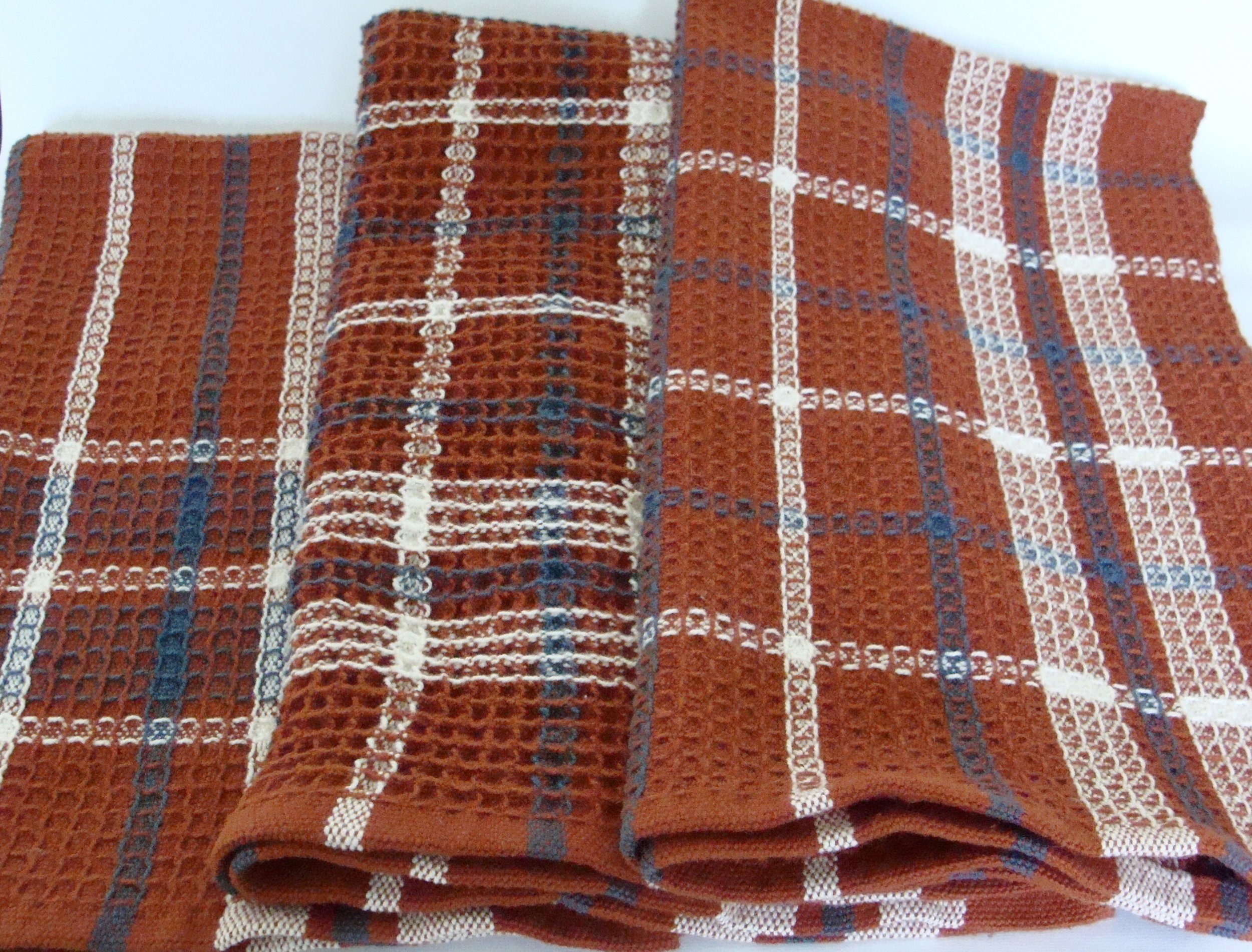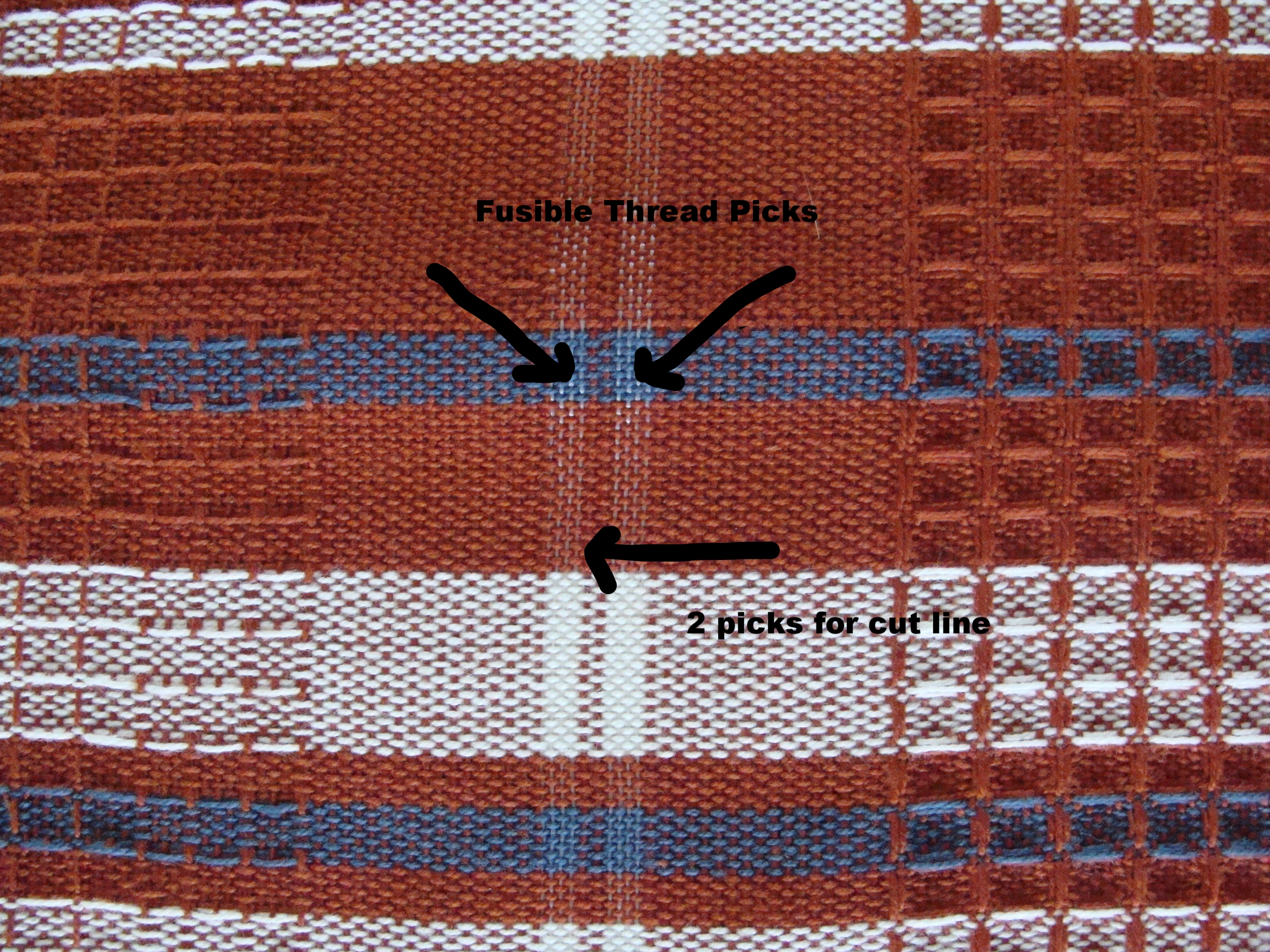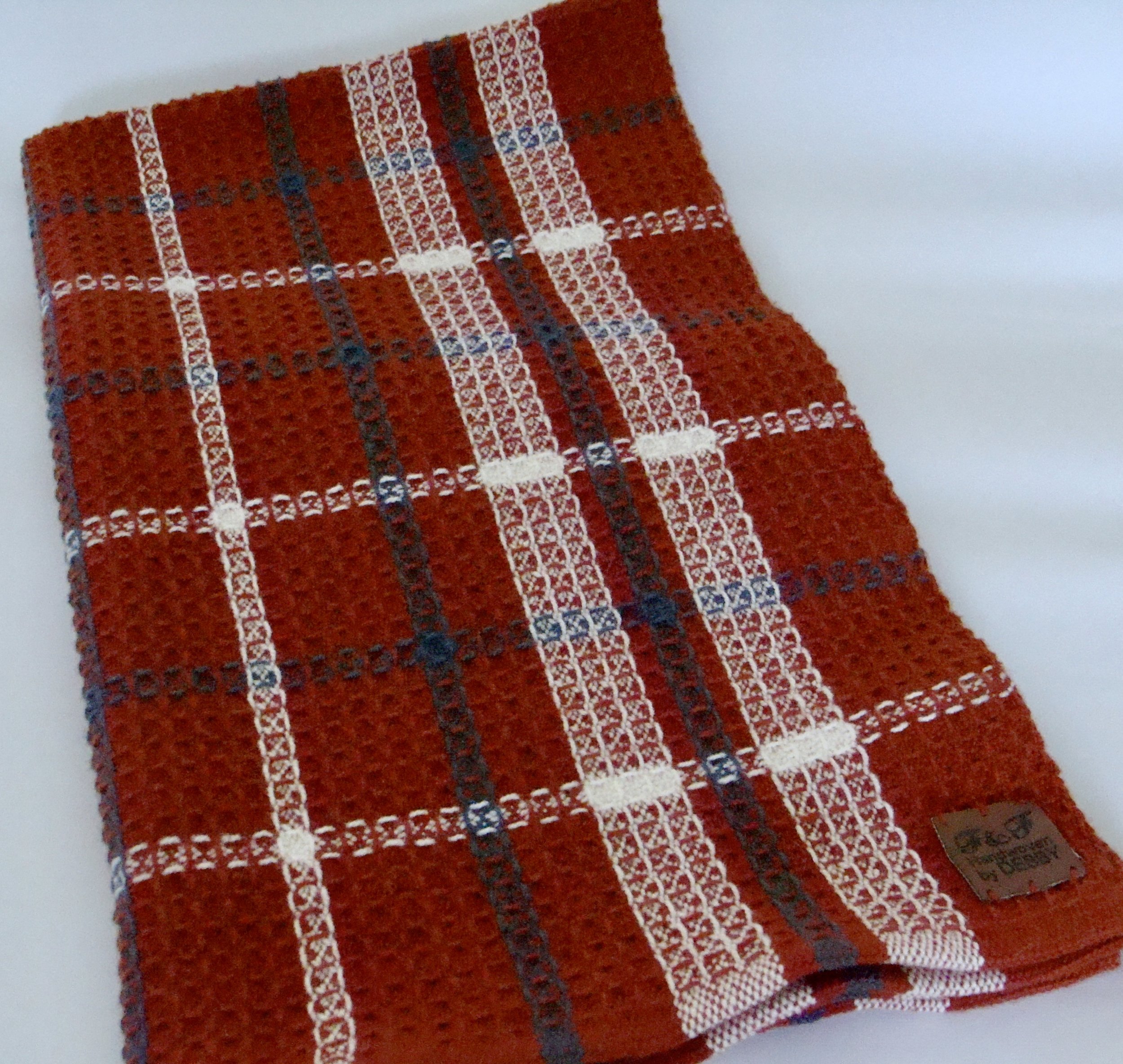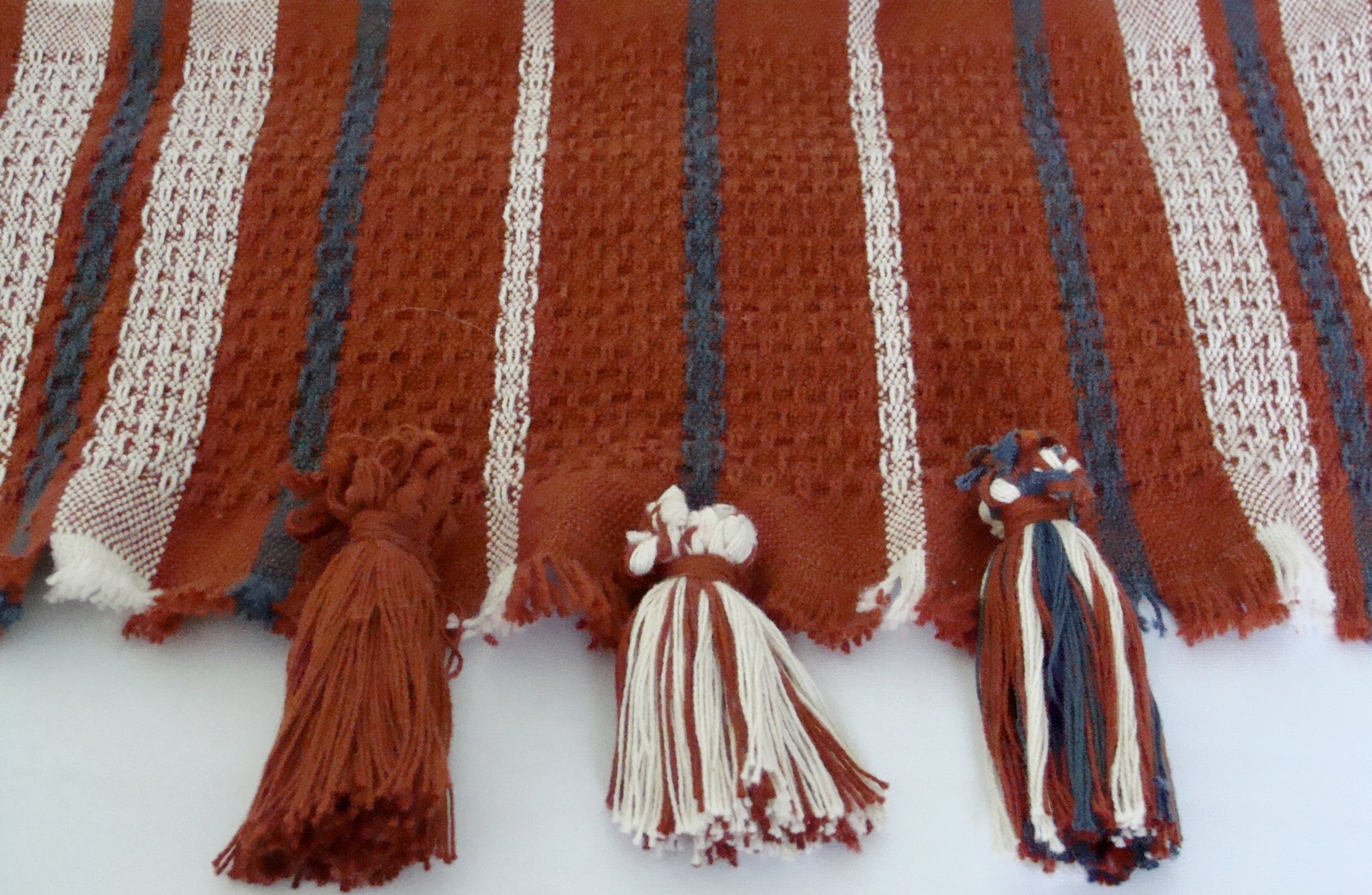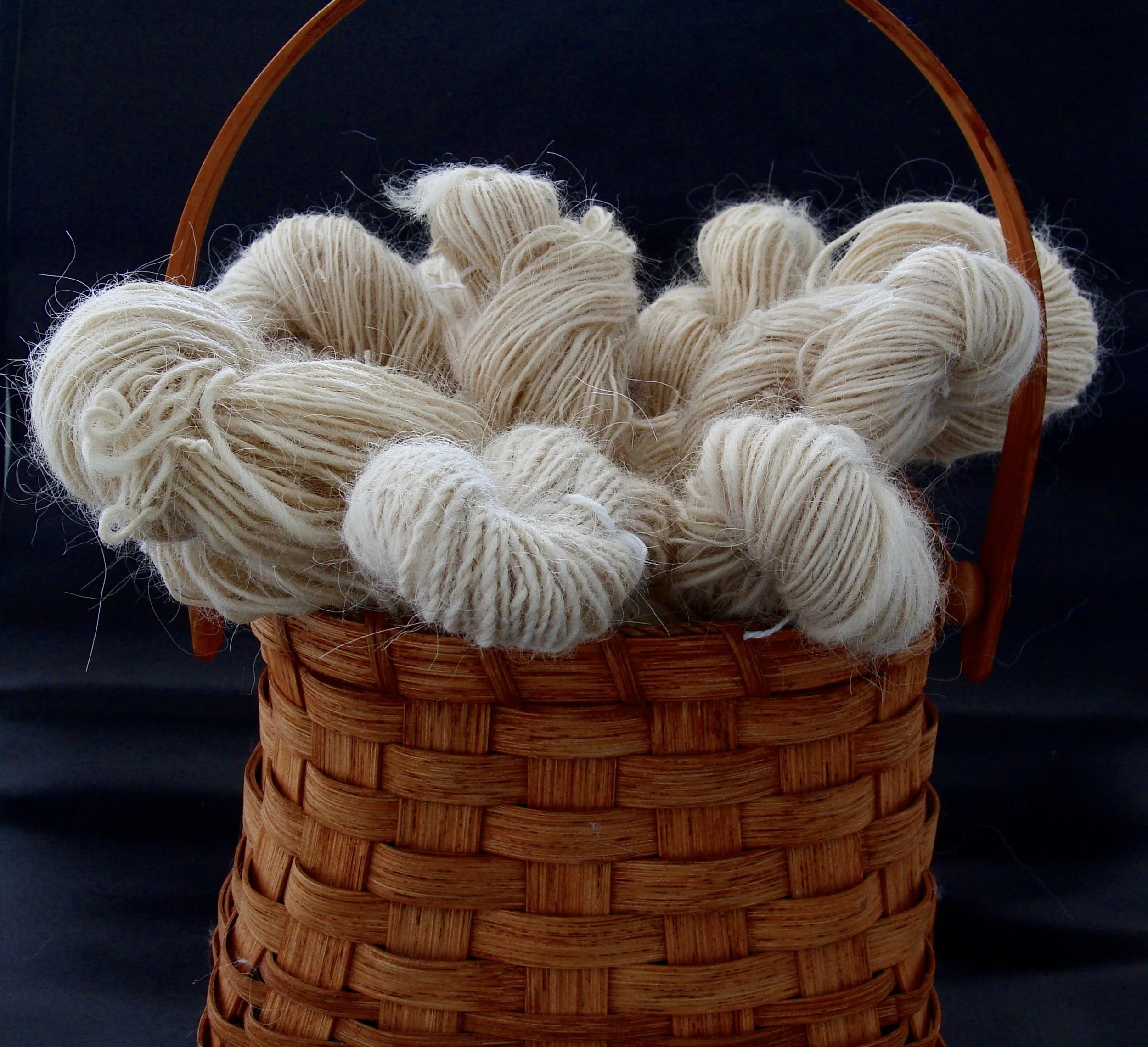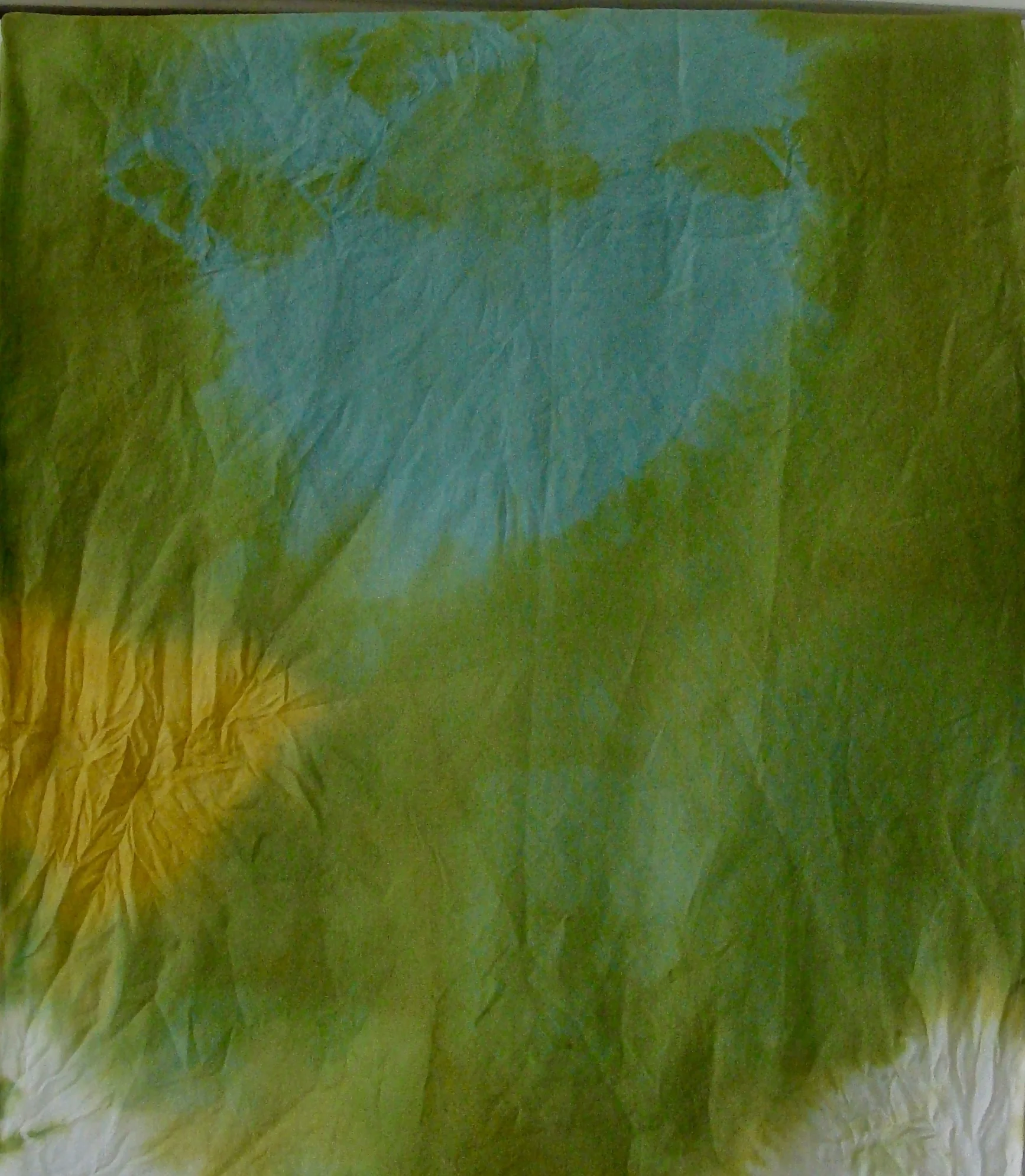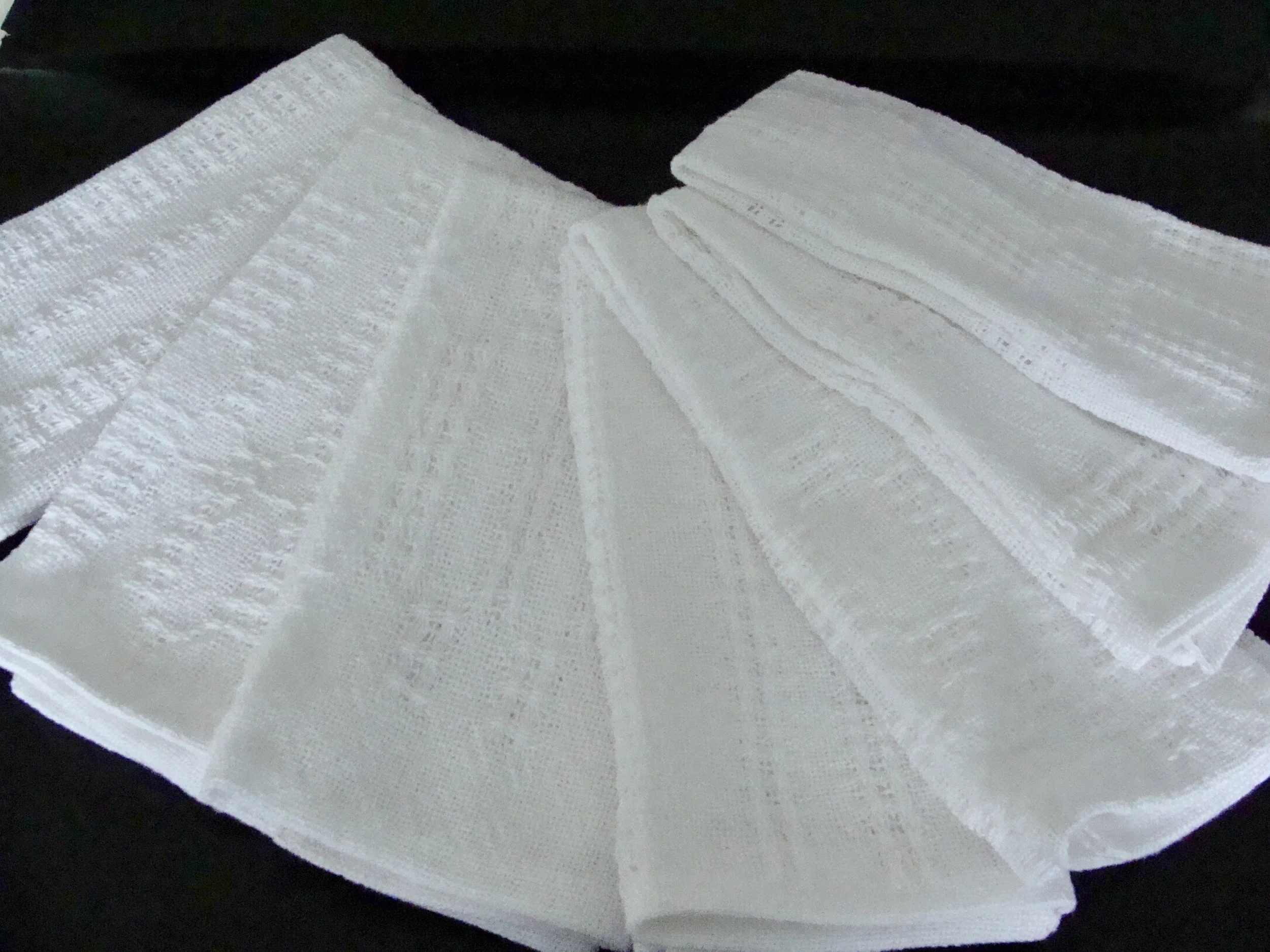Let's Weave . . . Waffle Weave
This is the next installment in the 'Let's Weave . . . ' series. For a previous post see here. Today's weave structure is waffle weave. Waffle weave is made up of warp and weft floats of varying lengths arranged around a plain-weave center. When the fabric is taken off the loom and washed, these floats contract and form a texture that looks like a waffle. This weave structure is popular for towels, both because of its absorbency and appearance.
Plain-Weave - basic weave of over and under one warp thread.
Float - a thread that travels over more than one warp or weft thread.
I chose a project published in Handwoven magazine September/October 2009 entitled 'One Threading, Four Patterns, Four Towels' by Lynn Tedder. As the title indicates, there are four different versions of waffle weave used in each of four towels. The variations are created by changing the tie-ups and treadlings.
Tie-up - the way the shafts are grouped for weaving.
Treadling - the order the various shaft groups are raised or lowered.
I used three different colors of 8/2 unmercerized cotton which is ideal for towels as its soft and absorbent.
- Valley Yarns - Burnt Sienna (2,520 yd.)
- Yarn Barn of Kansas - Denim (336 yd.)
- Yarn Barn of Kansas - Natural (672 yd.)
Weaving Notes (for those who want the technicals)
Warp - 493 ends (includes 2 floating selvedges) 5 yd. long
Sett (warp) - 24 epi (2/dent in a 12 dent reed)
Sett (weft) - 18 ppi (more on that later)
Used a temple and beat on a closed shed.
Machine wash (cold water) with a couple of bath towels to form waffle cells. Machine dry (medium heat).
Hand hem edges.
Here is a little mini tutorial on how I finish the edges on towels.
At the beginning and end of each towel I throw four picks of fusible thread, followed by two picks of contrasting thread (which I will later use as a cut line), and then four more picks of fusible thread.
After I remove the fabric from the loom, I iron over the fusible thread with the iron set on whatever temperature is appropriate for the fabric, in this case the cotton setting (no steam). I use a piece of parchment paper under and on top of the fabric to prevent the 'glue' from the thread from sticking to my iron or ironing board. I iron the fusible thread on both sides of the fabric.
I then place the entire fabric length in the washing machine. After machine drying, I use a rotary cutter to cut apart the towels, using the contrasting thread as a cut line and then hand hem.
I have found the fusible thread works great for the raw edges. It doesn't unravel and it doesn't show or leave the finished fabric stiff.
Waffle Weave Towel - Variation 1 (15 1/4" x 32 3/4")
When the fabric is taken off the tension of the loom, the fabric will draw up a lot in width and particularly in length. As you look at the variations of the completed towels, notice how deep the waffles are on variation one. It is purposely woven at a longer length because it has the most shrinkage which is anticipated due to the more pronounced waffling. Overall, after finishing, it decreased by 3 1/4" in width and 11 1/4" in length!
Waffle Weave Towel - Variation 2 (16 3/4" x 32 3/4")
Waffle Weave Towel - Variation 3 (16 1/2" x 29")
Reflections
- So, this project's name is 'One Threading, Four Patterns, Four Towels', so why am I showing you three towels? The project called for 10/2 cotton, but I used what I had on hand which is 8/2 cotton, a slightly larger grist. This didn't make much difference in the finished width, as I used the same sett of 12 epi (warp ends per inch). However, it did make a difference in the length. The project called for 24 ppi (weft picks per inch) and with the 8/2 cotton I ended up closer to 18 ppi. So, that added 25% more yardage to each towel or roughly an additional 4-8"; not leaving me enough warp for a complete fourth towel.
- In the future, I could either adjust the draft to have less weft repeats or add additional length to the warp. (or I could use the 10/2 cotton . . . nah, that's too easy!). In reality, I'm pleased with them as is.
So, here is variation four which, at 17" x 9 1/4", won't be a towel; but I'll make something with it! Remember, I don't like to waste anything. Speaking of not wasting, I turned the thrums (the waste ends of the warp) into 3 tassels to use on future projects.
Additional Ideas for Waffle Weave:
- Vary the number of threads used for the ridged outline and the number of threads used in the small squares.
- Use the same color throughout or the ridges can be a different color. A deeper color or shade in the pockets creates an increased visual appearance of the waffle texture.
- Use a thicker thread for the ridges than the pockets.
- Vary threading (twill is traditionally used, but try a huck threading).
- Wool gives the greatest texture.
- Acrylic or similar washables make good baby blankets.
Selected Waffle Weave Projects from Handwoven Magazine:
• Sunny Towel Set by Margaretha Essen-Hedin, MJ89 p47, 78 [5]
* Bath Set in Natural Cottons by Karen Tenney, SO03 p52-55 [4,8]
• Serendipity Waffle-Weave Towels by Connie Westbrook, SO09 p34-35 [4,8]
• Sweet Honey in a Waffle Baby Blanket by Suzie Liles, MJ12 p40-41 [8]
• Waffle-Weave Table Runner by Kati Reeder Meek, MJ10 p52-53 [RH,3]
• Green Waffles Bath Towel by John Mullarkey, SO14 p54-56 [4]
• Leap of Faith Waffle-weave Scarf by Coreen Hartig, MJ12 p38-39 [8]
• Chenille Evening Jacket by Teresa Kennard, JF95 p49, 84-85 [4]
I hope you enjoyed this post. It would thrill me if you would leave a comment below!



